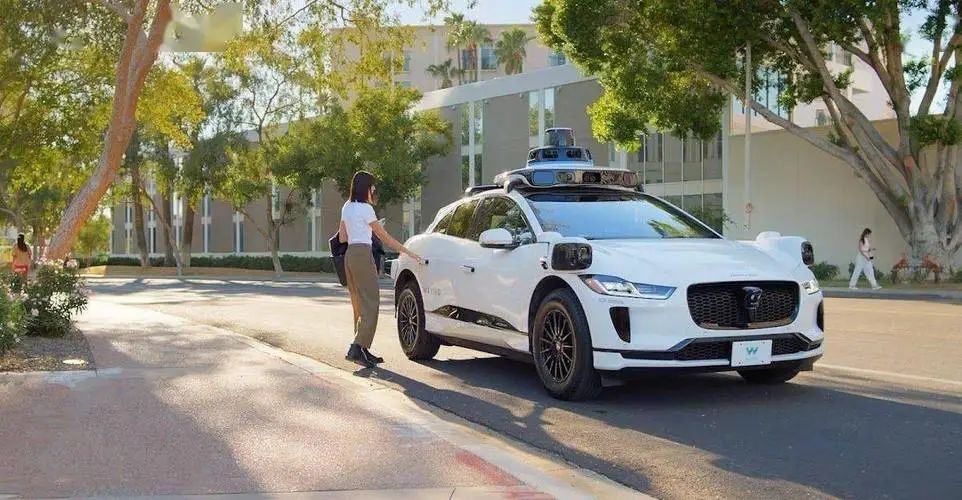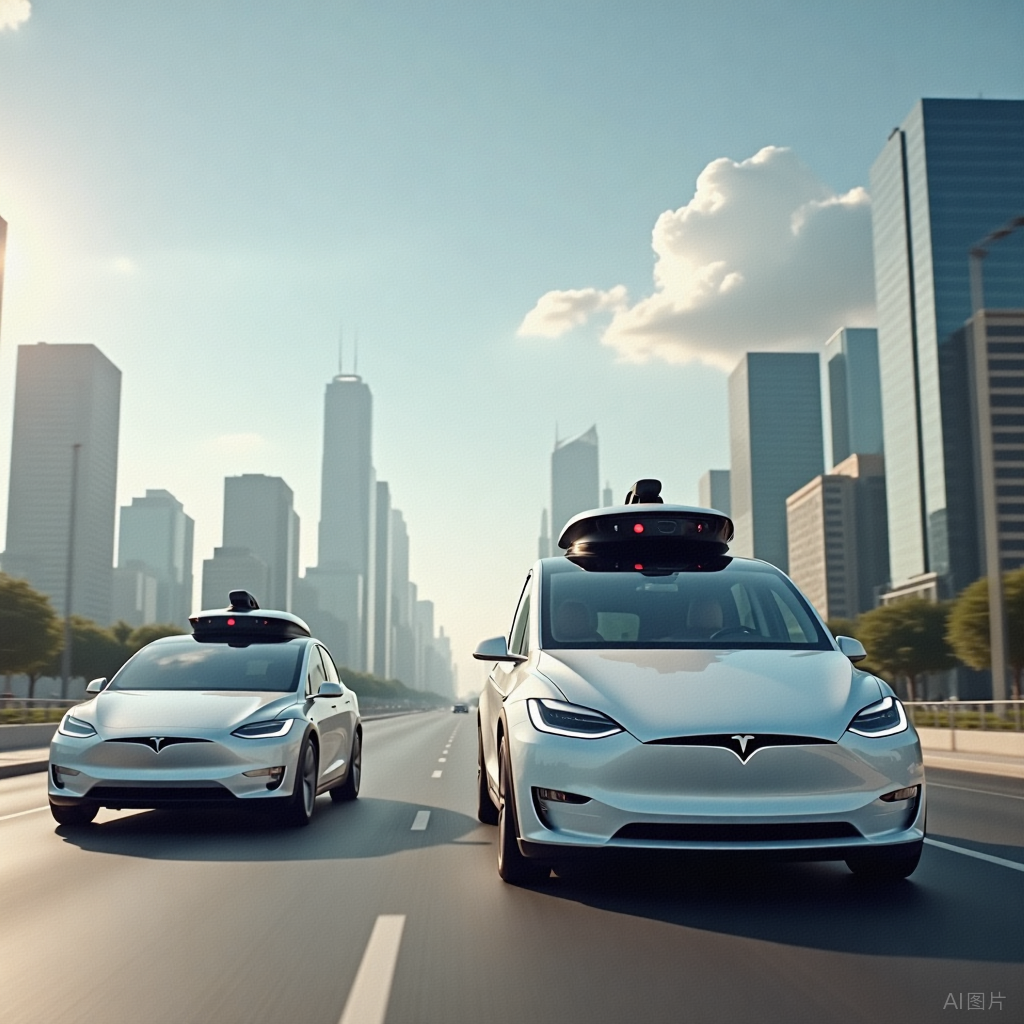Waymo Expands Autonomous Driving Territory in California by 50%: 250,000 Rides Per Week and Counting! Is Tesla Ready for the Challenge?
![]() 06/23 2025
06/23 2025
![]() 565
565
Introduction
In the heart of San Francisco, Li, a weary office worker, scrolls absentmindedly through a ride-hailing app when a sudden notification jolts him awake: "Your Waymo driverless taxi has accepted your order and is on its way." What once seemed like a scene from a sci-fi film is now a reality as Waymo transforms California into a showcase for autonomous vehicles.
Recently, Waymo announced a 50% surge in its service territory, encompassing vast areas of San Francisco, Los Angeles, and Silicon Valley. This bold move has stolen the spotlight from Tesla's upcoming driverless taxi launch in Austin.
In the realm of autonomous driving, this expansion is nothing short of a game-changer. Today, let's delve into this fierce "territorial battle."
(For reference reading, please click: "From Frenzy to Rationality: Why L5 Autonomous Driving Has Not Arrived as Scheduled? Who Will Lead the Pack Among Tesla, Waymo, Baidu, WeRide, and Pony.ai?")
I. Waymo's "Land Grab": A 250-Square-Mile Kingdom of Driverless Vehicles
1. What Does the Expanded Territory Look Like?
Waymo's latest expansion is nothing short of dramatic. In San Francisco, it stretches from Brisbane and South San Francisco, hugging the peninsula all the way to Burlingame, making it feel as though driverless vehicles are conquering new ground within the city.
Silicon Valley isn't far behind, with Menlo Park included and more areas of Palo Alto falling under Waymo's sphere of influence.
Los Angeles sees the most significant expansion. After the June 18 upgrade, areas like Playa Del Rey's beachfront, Echo Park's artistic alleys, and even the entrance to UCLA were added to the service area, with famous Sunset Boulevard becoming a must-visit landmark for driverless vehicles.
The numbers speak volumes: Waymo's service area in California now covers 250 square miles (approximately 647.5 square kilometers), roughly equivalent to 1.3 Pudong New Areas in Shanghai.
The scale of operations is even more astonishing. Since June 2024, the number of rides in San Francisco, Los Angeles, Phoenix, and Austin has surged fivefold, with 250,000 rides completed per week and a fleet size exceeding 1,500 vehicles.
Imagine 35,000 rides completed by driverless vehicles every day. This volume is akin to providing free food delivery to California residents every week.
2. Unique Scenarios Handled by Driverless Vehicles
At San Francisco's Fisherman's Wharf, a Waymo vehicle maneuvers like a nimble dancer, deftly avoiding tourists' swaying selfie sticks.
In the residential areas of Palo Alto, it acts like a vigilant guard, quickly identifying suddenly darting pet dogs and stopping smoothly to avoid them.
The most intriguing scenario is around Los Angeles International Airport. While driverless vehicles cannot yet enter the airport directly, they can drop passengers off at the nearest corner, allowing them to "walk the last mile" on their own.
One passenger quipped, "I used to complain about airport shuttle buses taking the long way around, but now I find that driverless vehicles understand me better. At least they won't deliberately take detours."
II. Technical Showdown: Waymo's "Luxury Package" vs. Tesla's "Civilian Route"
1. Waymo's "Extravagant" Configuration
Stepping into a Waymo driverless vehicle, the rotating "lollipop" on the roof—the lidar—resembles a sleek observation tower. Coupled with conventional radars and a plethora of cameras hidden within the body, it's akin to the seat of Iron Man, brimming with sensory capabilities.
How extravagant is this configuration? The hardware cost of each Waymo vehicle may exceed $100,000, with the lidar alone costing tens of thousands of dollars.
But the results are remarkable. It can identify soda cans on the road from 100 meters away and even see through the front car's windows to predict pedestrian movements in advance, outperforming the human eye.
Waymo's technology validation process is meticulous, advancing through several stages: internal employee trials, limited opening, and full opening. For example, on Lombard Street in San Francisco, the driverless vehicle controls its speed with precision, smoothly navigating each curve, often more stably than human drivers. On the congested 405 Freeway in Los Angeles during rush hour, it weaves through traffic skillfully, earning the admiration of seasoned drivers.

2. Is Tesla's "Civilian" Solution Reliable?
On the other hand, Tesla, which plans to launch driverless taxis in Austin on June 22, relies solely on cameras and algorithms for hardware, at a cost so low that Waymo could only envy. However, reports suggest that Tesla only tested for "a few days" before daring to launch, which, compared to Waymo's rigorous months-long testing, seems overly hasty.
An insider joked, "This is like a primary school student directly challenging the college entrance exam. Commendable courage, but the difficulty is too great."
3. Significant Differences in Technical Approaches
Waymo chooses to tackle the hardest urban roads first, while Tesla starts with relatively simple highways and gradually moves into urban conditions. It's like one challenging a high-difficulty dungeon first, while the other practices on easy monsters. But can Tesla's pure vision solution handle the complexities of urban roads, such as skateboarders suddenly darting out and pedestrians jaywalking? It's akin to giving someone with only a "monocular telescope" the task of finding a specific small bead in a bustling market—the difficulty is evident.
III. Data "War": The "Secret Weapon" Behind 250,000 Rides
1. Waymo's Data "Magic"
Waymo's secret weapon is data. 250,000 rides per week are like feeding the AI brain 250,000 challenging exam questions.
In San Francisco's Chinatown, driverless vehicles have learned to handle various "tricks" of jaywalking pedestrians through these data. On Hollywood Boulevard in Los Angeles, they have figured out the pattern of tourists suddenly stopping to take photos and prepare accordingly.
After these massive amounts of data are sent back to the server, Waymo's algorithm engineers, like a group of super teachers grading assignments, carefully analyze and optimize the model, making the driverless vehicles smarter and more "human-like" in their driving.
What's even more impressive is fleet coordination. The 1,500 vehicles are like 1,500 scouts, with each vehicle's encounter with new scenarios and problems instantly synchronized with the entire fleet. For example, if a Waymo vehicle encounters sudden road construction in Silicon Valley, its response strategy can immediately be known by other vehicles, so that the next time a similar situation arises, everyone can handle it effortlessly. This ability to "share experience" elevates the overall level of the Waymo fleet dramatically.
2. Tesla's Data "Shortcoming"
In contrast, Tesla, having only tested for a few days before the trial operation in Austin, has accumulated a paltry amount of data.
Assuming 100 vehicles are deployed in Austin and each runs 10 times a day, there would only be a few thousand ride data accumulated over a few days, which is negligible compared to Waymo's massive weekly data.
This is like a child who has studied for only a few days having to take an exam with a scholar who has studied for years. The result is self-evident.
Without sufficient data to "feed" the AI, Tesla's driverless taxis may behave like inexperienced novices when facing complex road conditions, getting flustered and even making mistakes.
IV. Industry Storm: Waymo's "Rural Surrounding Cities" Strategy vs. Tesla's "Urban Blitzkrieg"
1. Waymo's "Ambitious" Plan
Waymo's expansion strategy is akin to "rural surrounding cities." It first refines its technology to an extraordinary level in autonomous driving "test fields" like San Francisco and Los Angeles, accumulating a wealth of practical experience before gradually advancing into other cities.
After this significant expansion in California, direct airport access has already been achieved in Phoenix, and the next step is likely to be establishing intercity routes between San Francisco and Los Angeles.
By then, passengers will be able to relax all the way from San Francisco to Los Angeles in driverless vehicles, binge-watching shows or sleeping—a truly enjoyable experience.
Moreover, Waymo has applied for a license to test autonomous taxis in New York, suggesting its intention to promote driverless vehicle services across the United States.

2. Tesla's "Counterattack" Path
Tesla's choice of Austin for the trial operation has a bit of a "dodging the sharp edge" vibe. After all, Waymo has deep roots in California, making it difficult to directly confront, so Tesla first opens up in Texas.
However, Austin is also a market where Waymo operates, so this move clearly implies a frontal challenge.
Some analysts believe that Tesla may want to quickly roll out driverless taxi services leveraging its cost advantage, using "price wars" to squeeze Waymo's market space.
But autonomous driving isn't something that can be easily achieved by simply throwing money and relying on low prices. The stability and safety of the technology are key, making Tesla's "counterattack" quite challenging.
V. Future Speculation: A $68.7 Billion Market by 2035, Will Driver's Licenses Become Obsolete?
1. How to Divide the Huge Pie?
According to Statista data, the global driverless taxi market was only $5.94 billion in 2024 and is expected to soar to $68.75 billion by 2035, with a compound annual growth rate of 24.3%.
Goldman Sachs predicts that the scale of driverless taxis in the Chinese market could grow 757-fold in the next decade, reaching $47 billion.
(For reference reading, please click:
"Goldman Sachs: China's Autonomous Taxi Robotaxi Market Will Reach $47 Billion by 2035, a 757-Fold Increase in Ten Years! Profitability in First-Tier Cities Expected by 2026")
What does this mean? In the future, most of the taxis on the streets may be driverless. By then, our driver's licenses may become obsolete collectibles like pagers, and driving may turn into a pure entertainment activity rather than a necessary skill for travel.

2. Major Changes in Urban Transportation?
When Waymo, Tesla, and other driverless vehicles flood the cities, urban traffic rules may have to undergo a "major overhaul." Dedicated lanes for driverless vehicles may be designated to allow them to run faster and smoother. Or, driverless vehicles may be allowed to drive faster in specific areas to improve road traffic efficiency.
Parking issues may also be easily resolved. After dropping off passengers, driverless vehicles can directly drive away to pick up the next one. Cities may no longer need to build so many parking lots, and the saved land can be used to build parks, shopping malls, making urban life more enjoyable.
Some people even boldly speculate that future home prices may be linked to the "coverage rate of driverless vehicles," making it nothing to fear living farther away since driverless vehicles can provide quick transportation.
In summary, Waymo's crazy expansion and Tesla's strenuous pursuit in this autonomous driving battle are essentially a "dance" between humans and machines. We teach machines how to drive safely, and machines are also changing our way of travel and even redefining urban life. With a 50% expansion in its territory, Waymo tells us: The era of driverless vehicles has truly arrived! Are you ready, folks?
#WaymoLaiYe #Driverless #AutonomousDriving #DriverlessTaxi #Waymo #Tesla #FlyingCar







